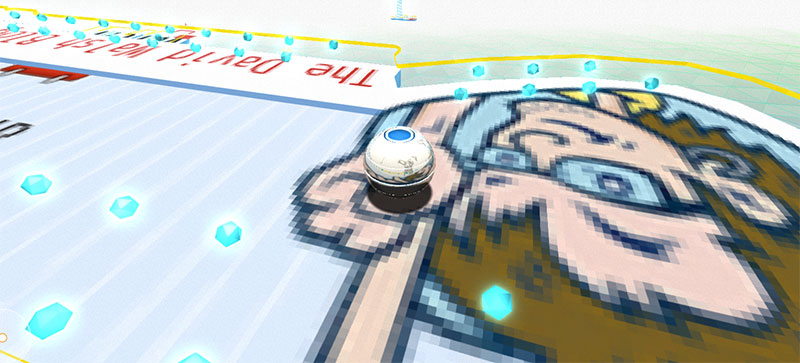CSS Animations Between Media Queries
CSS animations are right up there with sliced bread. CSS animations are efficient because they can be hardware accelerated, they require no JavaScript overhead, and they are composed of very little CSS code. Quite often we add CSS transforms to elements via CSS during :hover, and we also create keyframe-based animations by adding a className, but did you know you can animate elements using media queries as the trigger? Let's have a look!
The CSS
The syntax for creating these animations and transitions is the same between media queries as it is between element states; the only difference is actually enacting them between the media queries:
/* base state */
#layout {
position: relative;
width: 900px;
border: 1px solid #ccc;
height: 200px;
/* animate width over a given duration */
transition: width 2s;
}
.child {
top: 0;
bottom: 0;
width: 290px;
position: absolute;
opacity: 1;
font-size: 20px;
overflow: hidden;
transform: translate3d(0, 0, 0);
/* animate opacity, left, width over a given duration */
transition: opacity 2s, width 2s, left 2s, font-size 2s, color 2s;
}
#child1 { left: 0; background: lightblue; }
#child2 { left: 300px; background: lightgreen; }
#child3 { left: 600px; background: lightyellow; }
/*
When the client has 860 width or less:
- animate the first two elements to be wider
- fade out and hide the third element
- animate the background colors
- animate the font-size of the block
*/
@media screen and (max-width: 860px) {
#layout { width: 600px; }
.child { width: 290px; font-size: 12px; }
#child1 { left: 0; background: blue; color: #fff; }
#child2 { left: 300px; background: green; color: #fff; }
#child3.child { /* hider */ opacity: 0; width: 0; }
}
The creativity is all in the developer's hands; animating media queries isn't difficult, but the use of them is more interesting. Some sites used to animate the position of structure elements during window resize, which is nice but how often is that a realistic usage? A more realistic usage is with mobile devices, animating elements when orientation changes:
/* base mobile styles */
#sidebar {
transition: opacity 2s;
width: 300px;
overflow: hidden;
}
/* portrait */
@media screen and (orientation:portrait) {
/* portrait-specific styles */
#sidebar {
opacity: 0;
width: 0;
}
}
/* landscape */
@media screen and (orientation:landscape) {
/* landscape-specific styles */
#sidebar {
opacity: 1;
}
}
The animation above triggers when the device goes from portrait to landscape, and visa versa. This is incredibly useful when hiding a pane in portrait view and elegantly showing that pane when the user switches to landscape view.
CSS animations between media queries have traditionally been a delicacy of web design, but there are practical uses. The best part of them? There is no JavaScript involved and you can force CSS hardware acceleration if you'd like. Take a few moments to look at your mobile site to see if you can add this effect.





Great! This is something that I never tried before. It is new to me. Surely it would save my time and effort to build attractive website for my clients.
YOU ARE A GENIUS. WHO WOULD THINK TO DO SOMETHING LIKE THIS?
Instead of using
-webkit-transition: opacity 2s, width 2s, left 2s, font-size 2s, color 2s;, can’t we just use-webkit-transition:all 2s;, is it valid or not?Nice post, Mr. Walsh.
@RAM RATAN MAURYA Yes it is valid, http://www.w3.org/TR/css3-transitions/#transition-shorthand-property – I suspect it requires a bit more processing, but I have no data to back up my assumption.
CSS is the best way to implement animation without any load of java script that can be more heavy and we can use it as media query,so it will definitely reduces the work load.
Wonderful! thank you for this! I always wondered how Chris Coyier’s “frog” transitioned as the screen resized (in his version 9 design), now I know how :)
Dude, I have been using your code for years; You never fail to amaze me with what you do. Awesome. Also I’m really digging media queries for great responsive design.
Thank you for the clever code. This will look superb integrated into our site. CSS is the future for providing attractive content to multiple client platforms.
I think you’re ahead of the curve on this idea; a year or two from now I expect sites to be using this technique very heavily!
This is a cool demo, but it should be noted it’s pretty expensive for FPS. Running in Chrome and using the timeline tool, the resize transitions looked to be between 15 and 25 FPS and was pretty jumpy. Not surprising given the reflows of changing the window, plus the paints and transitions on top, but I think it’s important to note .
For performance reasons, I often do exactly the opposite: scope animation css such that transitions only apply to wider widths. Until we get media queries that let us key off of device cpu power, it’s sort of the best we can do, but it pays to be conservative with transitions on smaller devices where most users won’t even see a smooth transition, and unnecessary transitions can cause scroll choppiness. Some devices will even animate hovers on touch devices where the user’s finger blocks the entire effect! That’s not to say don’t ever do this, just be sure to budget your effects for the best experience in the space you have!
That’s a great idea — keeping scope on animations! I’d never thought of it but the benefits are likely huge!
i want table hiding using media query